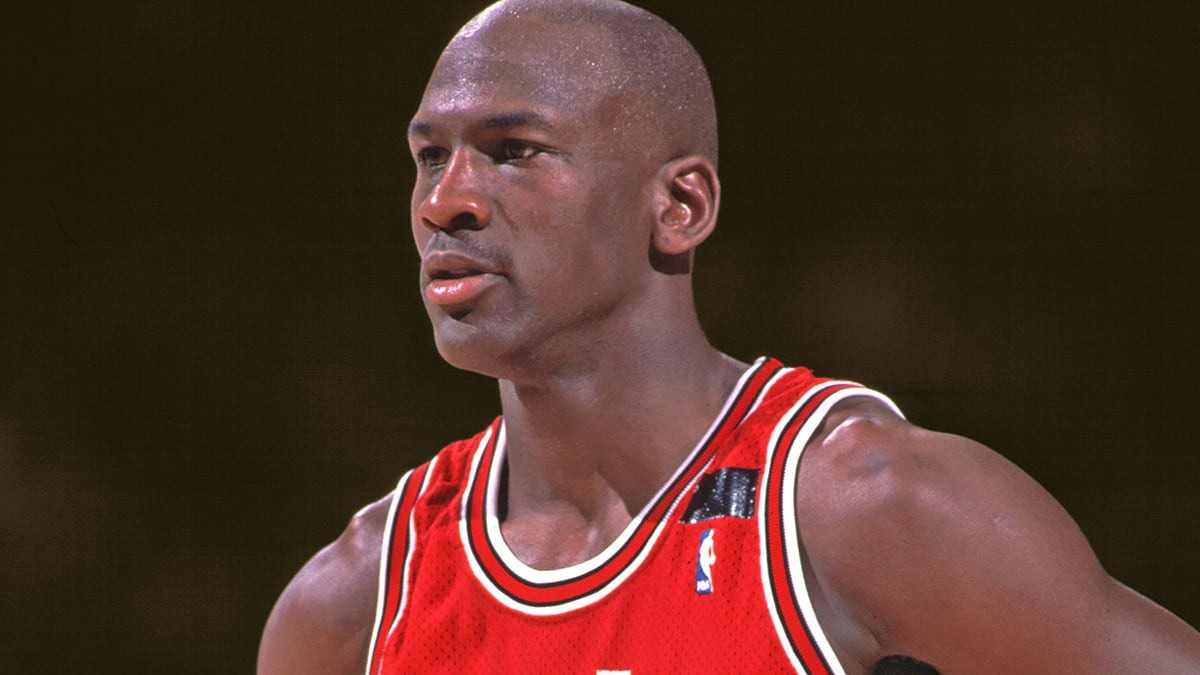Bulls legend Michael Jordan has done pretty much everything there is to do in the NBA, from titles to MVPs, to All-Star appearances and more. But according to NBA analyst Tom Haberstroh, not all of his awards may be completely valid.
“A closer look at Michael Jordan’s 1987-88 season reveals a substantial discrepancy between his home and road statistics, raising questions about the authenticity of his off-the-charts steals and blocks numbers that season — and shining a light on an era that seemed particularly vulnerable to the hidden hand of homer bias,” wrote Haberstroh of Yahoo Sports. “Considerable evidence — both statistical and corroborating video — suggests that Jordan’s Defensive Player of the Year award may not be as valid as we thought.”

The 1987-88 season was like a coming-out party for Michael, who had the whole world raving about this majestic game. As a beast on both ends of the floor, he took the basketball world by storm to win his first MVP and put his name on the map as a potential all-time great.
Arguably even more impressive was Jordan winning the Defensive Player of the Year award that year, and it’s widely considered to be one of the greatest achievements of his career. The 25-year-old star was a menace on that end of the floor and finished the season with an astounding stat line of 35.0 points, 5.9 assists, 5.5 rebounds, a league-high 3.2 steals, and 1.6 blocks per game.

However, according to Haberstroh, there’s reason to believe that the stats recorded were either exaggerated or not entirely accurate. The claim is based on a discrepancy between his home and road statistics, suggesting that league personnel were inflating his numbers while he was at home.
In the 41 games he played at Chicago Stadium, Michael averaged 4.0 steals and 2.0 blocks per game — which are just ridiculous numbers for any player. Comparatively, Jordan averaged just 2.3 steals and 1.1 blocks per game away from his home turf — which is still great, but more in line with other DPOY candidates at the time. So, while some level of increase for home games is to be expected, the jump we see that year is certainly unusual.

While most fans chalk it up to sheer dominance, Jordan totaling so many steals and blocks that season is astounding given that no other guard besides John Stockton was even close to the feat. It also leads to some questions when you consider that it was the only time that Michael ever won the award.
Unfortunately, we may never know the truth behind Jordan’s Defensive Player of the Year campaign and it’s very possible that there was a coordinated effort to inflate his stats. But without knowing for sure, we shouldn’t take away such a monumental achievement from Michael.
However, according to Haberstroh, there’s reason to believe that the stats recorded were either exaggerated or not entirely accurate. The claim is based on a discrepancy between his home and road statistics, suggesting that league personnel were inflating his numbers while he was at home.
In the 41 games he played at Chicago Stadium, Michael averaged 4.0 steals and 2.0 blocks per game — which are just ridiculous numbers for any player. Comparatively, Jordan averaged just 2.3 steals and 1.1 blocks per game away from his home turf — which is still great, but more in line with other DPOY candidates at the time. So, while some level of increase for home games is to be expected, the jump we see that year is certainly unusual.

While most fans chalk it up to sheer dominance, Jordan totaling so many steals and blocks that season is astounding given that no other guard besides John Stockton was even close to the feat. It also leads to some questions when you consider that it was the only time that Michael ever won the award.
Unfortunately, we may never know the truth behind Jordan’s Defensive Player of the Year campaign and it’s very possible that there was a coordinated effort to inflate his stats. But without knowing for sure, we shouldn’t take away such a monumental achievement from Michael.